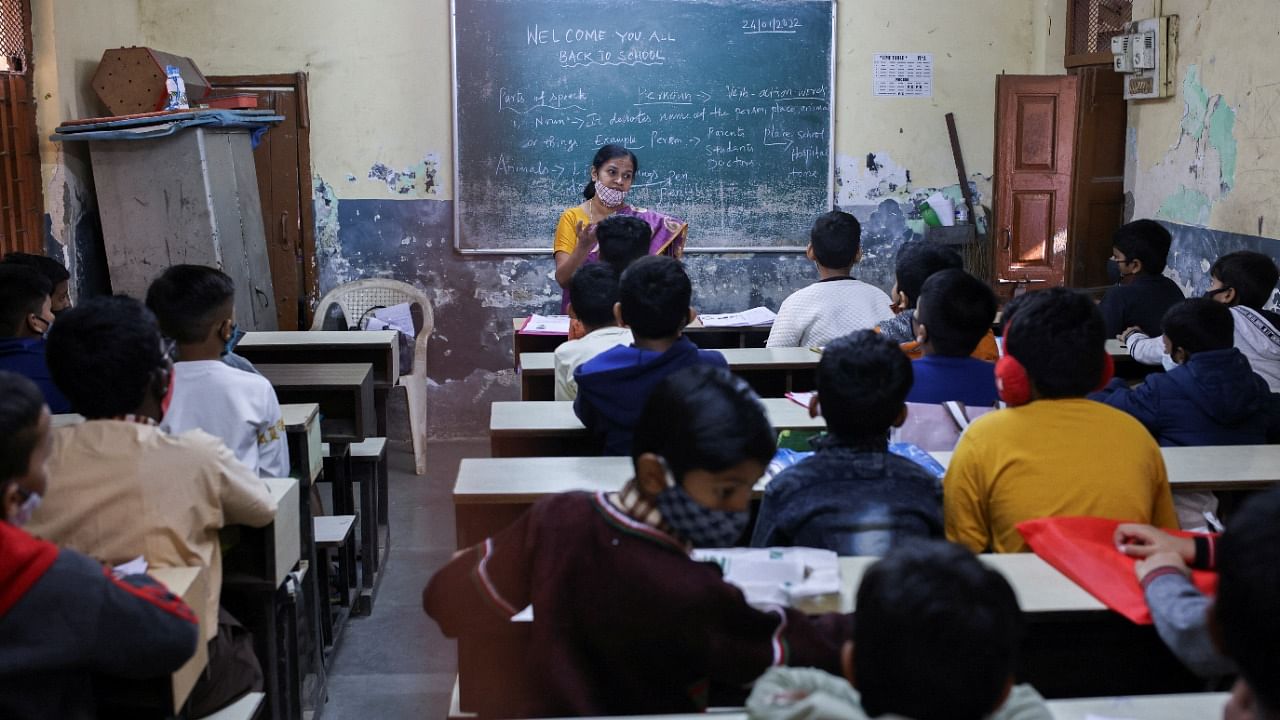
The International Day of Education, designated by the United Nations, was celebrated globally on January 24th earlier this week. In India, the date was also marked as National Girl Child Day. Ironically, the government of India slashed six per cent of its expenditure on education in the 2021 Budget, from Rs 99,311 crores to Rs 93,223 crores, approximately three per cent of the total budget.
Global experts, including India's own successive National Education Policy (NEP), since 1968, opine that countries should spend at least six per cent of their budgets on education. One of the primary fallouts of this underinvestment is on the public education system, which about 248 million, representing more than half of India's children, attend. In contrast, Norway spends 6.7 per cent of its budget on education, New Zealand 6.2, the United Kingdom spends 6.1 per cent, and the United States spends six per cent.
The Taliban took over the governance of Afghanistan in September 2021 and promised not to disrupt education in the war-torn country. It had been widely expected that one of the effects of the Taliban occupation would be education. They had proclaimed otherwise. After the initial posturing, however, the Taliban banned education for girls. In a Zoom-based interaction between girls in Mawoud, a learning centre in rural Afghanistan and Canyon Crest Academy in San Diego, the Afghan girls expressed their anguish on being born in this gender, as reported by the New York Times. This is but one example of how technology can help education, with or without the ongoing pandemic.
While I am not a proponent of the western-kids-teach-those-in-the-global-south, I realise that those in the global north seem to be more equipped technology-wise, at least when it comes to the hardware. Google may donate $7.5 million to UNICEF, and the World Food Program may question Elon Musk's tax contributions; the fact remains we need to hold each other accountable. Education must become the centrepiece of our social impact and what we expect from a more educated and equitable society.
Statistics tell us that 88 per cent of girls and 91 per cent of boys attain primary education globally. This number falls to 66 per cent each at the secondary stage and finally to 41 per cent and 36 per cent, respectively, when it comes to tertiary or college education. The out-of-school per cent of boys and girls at the primary stage has climbed down from 57 per cent and 42 per cent to 32 per cent and 27 per cent, respectively, in the last twenty years. But we need to do more. We have tried the governments for a very long time. We have also tried non-governmental organisations for more than 70 years. This is the result we have.
In 2000, the United Nations set itself a target of ensuring universal primary education to all children by 2015. It announced the new avatar of its Millennium Development Goals (MDGs) in 2015, called Sustainable Development Goals (SDGs), aiming to achieve the same target by 2030. That's thirty years and billions of dollars to ensure everyone can attend primary school. Many experts bet on the advent of Education Technology (EdTech) to herald a change in enrollment numbers. While the evaluations of such online companies may be in billions, and they may be employing thousands to entice the poor among us by shining a light on their children's future, we all know this is not a panacea. At best, EdTech can abet the education that is provided in person. The next Einstein will not emerge from online education after being coached on a smartphone. These EdTech giants can perhaps replace the coaching centres which have sprouted all over, but they cannot substitute the learning that should happen in a classroom.
The largest employers in the world, the BigTech, those interested in changing the world must come together to change the futures of our children in countries like India and globally. Those conferred with the Padma awards, the CEOs of Microsoft and Alphabet (Google), can give back to the country, which provided them with the subsidised education and the opportunity to fly away. They have the platforms, and they know how to connect people. It is time we asked them to do more – not only for the people they employ but also for those for whom their own governments cannot do much. UNESCO estimates approximately 12 per cent of the students globally will not return to their schools after the pandemic finally ends. Can we not do something together to keep them out of harm's way by taking education to them?
We may marvel at Sundar Pichai and Satya Nadella, among other Indian-origin CEOs and confer the coveted Padma Awards on them, much like on Indra Nooyi in the past. The next global CEO must be rooted in India, not foreign soil.
(The author is a former Chief of Communications with UNICEF in New York, where he worked for more than a decade)
Disclaimer: The views expressed above are the author's own. They do not necessarily reflect the views of DH.
Check out latest DH videos here